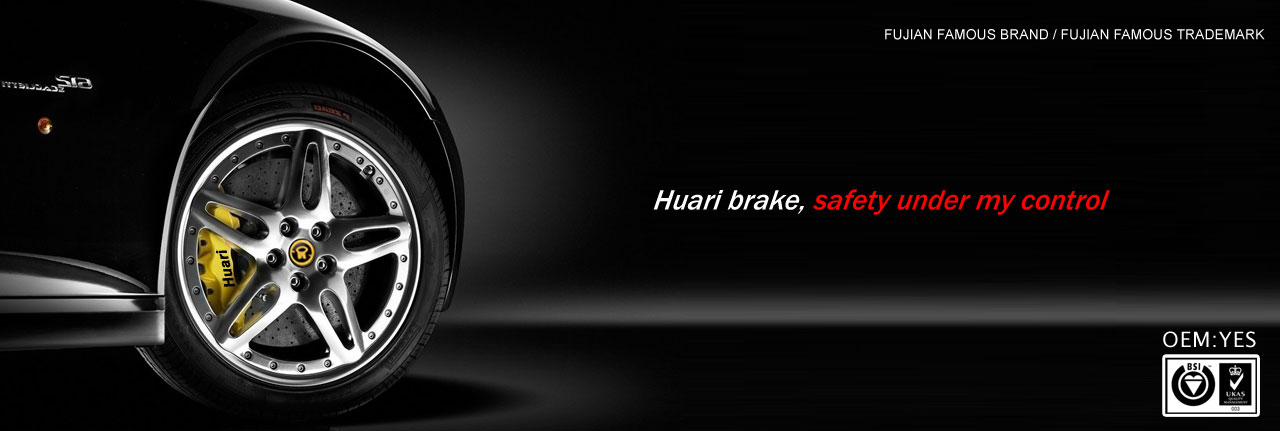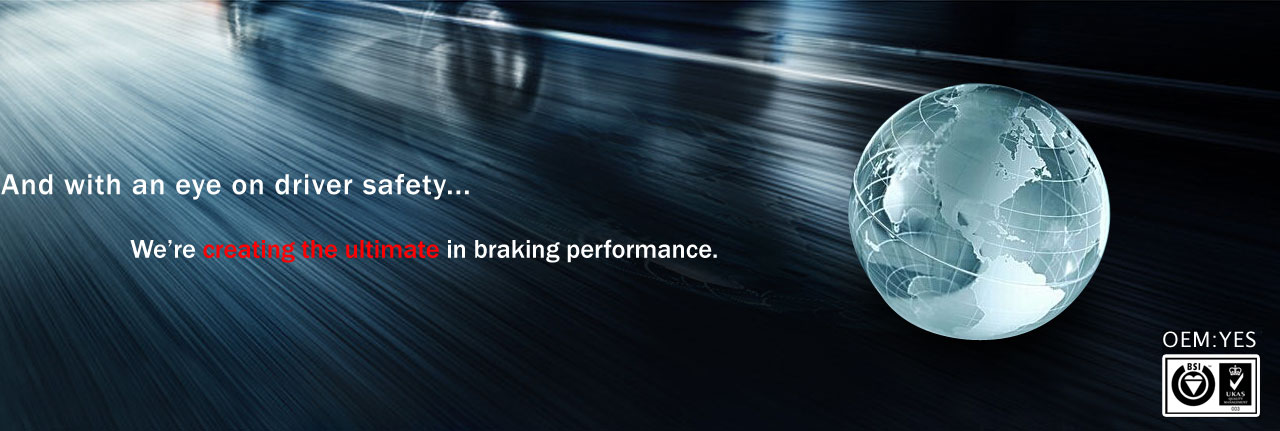How Brake Pads Work
There's a lot more to effectively using your car's braking system then simply stomping on the pedal when a squirrel darts out in front of you. The braking systems of cars, trucks and motorcycles are made up of a number of parts that translate the driver's actions into physical force that stops the car. One of those brake parts is your vehicle's brake pads.
Brake pads are a key brake part because they are the component that contacts and applies pressure and friction to a vehicle's brake rotors -- those flat, shiny discs that you can sometimes see just behind the wheels of some vehicles. The pressure and friction applied to the brake rotor is what slows and stops the wheel. Once the wheels stop turning, the vehicle stops moving, too. Though the role of brake pads as braking parts is pretty simple, the brake pads themselves are anything but.
Because of how fast a vehicle's wheels rotate and how much a typical car or truck weighs, brake pads undergo extreme stress every time you slow down or come to a stop. Think about it: Would you want to grab and hold on to a heavy metal disc that was spinning really fast? Imagine slowly squeezing that disc until the vehicle rolls to a halt -- it's a thankless job, but brake pads do it repeatedly for thousands and thousands of miles without complaint.
Stop by the next page where we'll learn a little about organic brake pads.
Brake pads were formerly manufactured using mainly asbestos as the friction material. That's because brake pads are exposed to a lot of friction, which generates a lot of heat. Asbestos is a good material for absorbing and dissipating heat. So what was the problem? When asbestos breaks down, it's creates dust that's dangerous to breathe -- and brake pads can create a lot of brake dust when they're slowing and stopping vehicles on the roads. Now, some brake pads and other brake parts are made from safer organic materials.
Organic brake pads, sometimes called nonasbestos organic brake pads, are made from natural materials liked glass and rubber, as well as resins that can withstand high heat. In fact, the high heat helps to bind the brake pad materials together. Kevlar is also an important component in many organic brake pads. An advantage of organic brake pads, including Kevlar brake pads, is that they're made of materials that don't pollute as they wear and they're easier to dispose of, too. They're also softer than brake pads made of other materials, which means they're often quieter. The downside of organic brake pads is that, because they're softer, they typically wear faster. As they wear, they also create more dust than other types of brake pads.
Because of these considerations, organic brake pads aren't a good choice for heavy vehicles like trucks or for high performance cars that may need to stop quickly from top speed. Organic and Kevlar brake pads are best suited for small cars that don't typically do a lot of aggressive driving. The light weight of the car, as well as limited hard stops, keeps organic brake pads in good shape -- and that keeps the ride safe, too.
Next, we'll take a look at a set of brake pads that might leave you with an empty wallet.
Ceramic brake pads offer great braking performance, wear well over time and are very lightweight -- all of which are important for high-performance driving. So again, what's the problem with ceramic brake pads? They're very expensive.
Ceramic brake pads are made from ceramic fibers, filler material, bonding agents and they may even have small amounts of copper fibers within them as well. Because they're mostly ceramic, these brake parts dissipate heat well, which keeps performance strong, even after repeated hard stops. They also don't break down very much with repeated use; that means they produce less dust than other types of brake pads -- and the dust that they do produce is lighter in color and doesn't stick to the wheels. However, because they're so expensive, ceramic brake pads aren't for every type of vehicle.
Sports cars that are routinely driven hard -- as part of club racing, for example -- can benefit from ceramic brake pads; however, almost every other vehicle performs just fine with other brake pad materials. For most drivers, the extra performance of ceramic brake pads isn't worth the extra cost.
Keep reading to find out about brake pads that won't break the bank.
Most vehicles on the road today have metallic brake pads. In case you're wondering, these brake pads aren't just slabs of metal. They're typically made of iron, copper, steel and graphite all mixed and together and bonded to form the pad material.
The reason that these pads are so common is simple -- metallic brake pads are cost-effective and durable. They provide good performance and are good at transferring the heat generated by friction with the brake rotors. The downside of metallic brake pads is that they're heavy, which can have a (small) negative impact on the car's fuel economy. Also, because of the extra weight, metallic brake pads aren't the best choice for high-performance driving. Being made of metal makes the pads very hard. That's what makes them durable. But because there isn't as much "give" in metallic brake pads, they can cause more wear on the brake rotors than other types of brake pads. The metallic brake pads themselves hold up well, but they often negatively impact the durability of other brake parts. Finally, metallic brake pads work best when they're warm. When a vehicle with metallic brake pads first gets going on a very cold day, stops may take slightly longer than usual until the brake pads heat up.
For most drivers, the positives of metallic brake pads outweigh the negatives, especially since metallic brake pads are good for stopping heavy vehicles like trucks.
Keep reading to learn about brake pads for specialty vehicles.
Motorcycle brakes work on the same principle as automotive brakes: The transfer of an action from the driver into a force that stops the wheels. When the driver of car or truck applies the brakes all four wheels work together to slow or stop the vehicle. On a motorcycle, the front and rear brakes usually operate independently of each other. Most motorcycles have independently controlled front and rear brakes but the controls differ: The front brake is controlled by a hand brake lever, while the rear brake is controlled by a foot pedal. The front brake tends to be more effective, delivering the majority of the stopping power. Because of this, motorcycle brake pads are a key component of motorcycle safety and an important brake part.
Motorcycle brake pads are manufactured using the same materials used in automotive brake pads; however, ceramic and organic brake pads are the most common. Because motorcycles are smaller and weigh considerably less than cars and trucks, organic brakes pads don't wear as quickly as they would on a car.
Up next, we'll find out how the big trucks slow their heavy loads to a stop.
Because trucks are so big and heavy, their brake pads are especially important. It takes a lot of power to stop a fully loaded truck moving along at highway speeds. Heck, it even takes a lot of power to stop an empty truck that's barely moving at all. That means that the strength of the pad and its ability to stop heavy loads repeatedly is very important. Organic brake pads, because they are soft and wear more quickly than other types of brake pads, are not recommended for trucks. So what type of brake part do you suppose is appropriate for a large truck?
Metallic and ceramic truck brake pads are good choices. Ceramic brake pads offer a lot of stopping power, even for heavy loads, but remember, they're very expensive. Metallic brake pads are less expensive; however, they wear the rotors much faster than the ceramic pads. The type of truck and what it's used for should determine the brake parts that are installed on it.
Obviously, a compact truck that's used mainly for commuting to and from work won't need the high-performance brake pads that a heavy-duty truck that routinely tows heavy loads through the mountains will require. Again, the type of truck brake pad material selected really depends on the size of the truck, the weight of the load that it will be hauling and the terrain to which it will be subjected.
You may think acceleration is the most critical factor for high performance cars, but most professional drivers will tell you that the brakes are equally important. After all, you can't win a race if you go crashing through a wall. Remember, in all cars (but performance cars especially), brakes aren't just about stopping. They also aid the car's handling through turns. So even though performance cars may look like they're going all-out during a race, the brakes are also getting a pretty good workout, too. High performance brake pads and other brake parts have to be able to keep up.
One of the most important components of high-performance brake pads is their ability to dissipate heat. If the brake pads get too hot, the brakes will fade -- often boiling the hydraulic brake fluid in the process. Brake fade occurs when braking components get too hot, resulting in a loss of stopping power.
Because brake fade is such a concern in racing, most high-performance brakes are ceramic; however, some very high-end race cars are beginning to use materials like carbon fiber. Both ceramic and carbon fiber brake pads are lightweight (another concern for performance drivers) and dissipate heat well so they stay strong throughout the race. The major downside is their expense. As we've already mentioned, ceramic (and carbon fiber) brake pads are very expensive.
Don't stop now. To read more about braking, brake pads and other related topics, follow the links on the next page.
2016-06-21 22:43:20
ADD:No. 1, Xiaban, Xiufeng Village, Shekou Town, Fu'an City, Ningde City, Fujian Province TEL:0086-0593-6388368||6558596 FAX:0086-0593-6338966 E-mail:brake@fjhuari.com / huari3348@126.com
Copyright ? 2013 Fujian Huari Automotive Parts Co., Ltd. All Rights Reserved.
Copyright ? 2013 Fujian Huari Automotive Parts Co., Ltd. All Rights Reserved.






